Ta Set Neferu – A Valley Where Beauties Sleep –
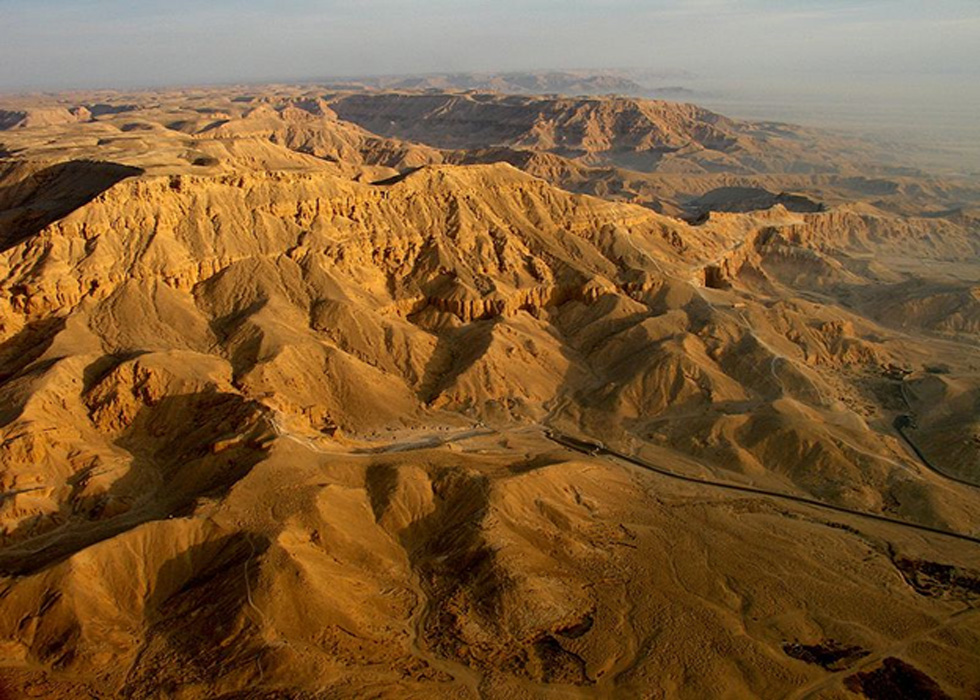
Ta Set Neferu – A Valley Where Beauties Sleep – Part I
(Read the article on one page)
The Valley of the Queens is a popular necropolis located on the south west of the village and temples of Medinet Habu. Along with the Valley of the Kings, it's one of the most fascinating necropolises near Thebes.
The first researcher who studied the Valley was Giovanni Batista Belzoni, an amateur archaeologist from Italy. He went there in 1816, and tried to unearth as many tombs as possible. Belzoni is strongly criticized for damaging many archaeological sites. He didn't look at them as a researcher would, but as treasure chests.
In 1828, John Gardiner Wilkinson located another 24 graves. Later Champollion, Roselling, and Carl Richard Lepsius tried to document and preserve as many tombs, mummies, and artifacts as possible. The first fully professional expedition in the valley started at the beginning of the 20th century, when Ernesto Schiaparelli and Francesco Ballerini went to the ancient necropolis. Until now, up to 98 tombs have been found.
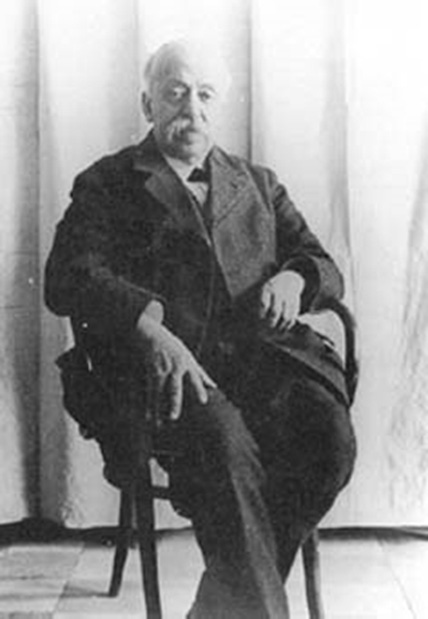
Photo of Ernesto Schiaparelli. (Public Domain)
The name ''Ta Set Neferu'' means ''The place of beauty''. The tombs discovered in the valley are dated from the New Kingdom Period (c. 1550-1070 BC) to the end of the Third Intermediate Period (c. 1070 - 712 BC). Most of them were looted in ancient times. Many of the tombs were also reused in the Roman Period. Some of the oldest tombs were used for animal mummies.
The Women Who Created the Power of Ramessides
After the fall of the 18th dynasty, the country needed strong new rulers. Apart from good education and charisma, Ramesses I, Seti I, and Ramesses II had one more asset – wise women who supported them.
- The first one of them, Sitre, found her last home in the tomb QV38. It
- was discovered in the 19th century. Her name means ''the daughter of Ra''. She belonged to a military family from Lower Egypt. Her father may have been a soldier during the reign of Horemheb, the last pharaoh of the 18th dynasty. She became a wife of Rameses I, who changed the country after the difficult rule of former kings. She was also crowned as a Great Royal Wife. Inscriptions say that she wasn't just another queen, but the closest adviser, companion, and friend of the king. She was the mother of pharaoh Seti I, who became one of the most important Egyptian rulers in history.
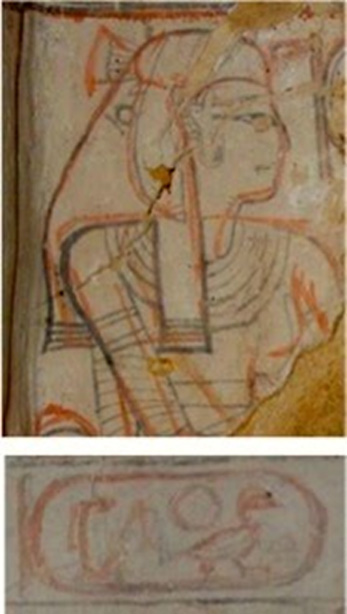
Image of Sitre and her name. (Google Site)
Sitre’s tomb was the first one in the Valley and contains many unfinished paintings. It is heavily damaged but the face of the queen is still visible on one of the walls. The story which comes from the paintings talks of a good wife who lived a magnificent life with her husband. Sitre died as an old woman and left a strong legacy for the woman who replaced her – Tuya.
Sitre was the one who found Tuya for her son. She was also known as Mut-Tuy, and was another important 19th dynasty queen, who was a source of support for her husband. Her father was Raia, a military officer. She was the mother of Ramesses II, and remained an active politician until her death in the 22nd year of the reign of her son. Her tomb, QV80, is much more damaged than the one which belongs to Sitre. The damaged inscription still refers to the glory of her rule, but most of the precious artifacts disappeared in ancient times. A part of a canopic jar, which is located in the Luxor Museum, is one of the most precious treasures connected with QV80.

Statue of Tuya from the Vatican. (CC-BY-SA-3.0)
The Jewel of the Valley
Nefertari means ''Beautiful companion''. The story of her love with Ramesses II is one of the most romantic in history of Ancient Egypt. It was unusual that a pharaoh expressed feelings to his wife in the tomb, but in the tomb QV66, Ramesses left a wonderful statement of love to his wife. The context of the inscriptions proves that the pharaoh was truly in love with her, and the death of Nefertari broke his heart.
She was chosen as a wife by Ramesses, not the powerful Tuya. It seems to be much more common that the mother was responsible for searching for a future wife. This time, it is believed that Ramesses saw the beautiful Nefertari and decided to marry her. However, their marriage was a scandal because of her roots in the family of Ay, her father.
In Ramessides times, all of the links connected with the Amarna Period were frowned upon. Hate towards the old dynasty was so strong, that Ramesses II decided to destroy the ruins of the city created by Akhenaten and Nefertiti. He reused the stones to build his own new capital – Pi Ramesses.
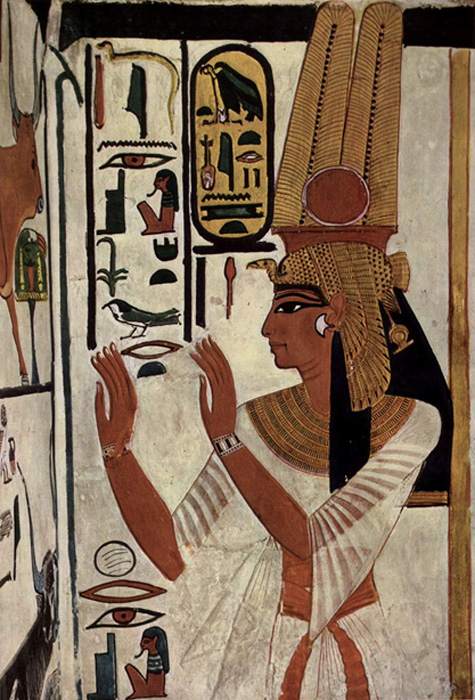
Tomb wall depicting Queen Nefertari, the great royal wife of Pharaoh Rameses II. (Public Domain)
When Schiaparelli entered the tomb of Nefertari in 1905, he was shocked by the damage made by the robbers and charmed with the beauty of the inscriptions. The painted walls were extremely well preserved. Unfortunately, most of the treasures were taken out of the tomb or damaged a long time ago. The mummy was destroyed too, only the mummified knees were found inside the tomb.
What happened to the other parts of her body? It could have been damaged, or taken to Europe as a source of ''mummy powder'', a medication popular amongst the European nobles especially in the 18th and 19th centuries. Most of the discovered treasures from the tomb are currently exhibited in a museum in Turin.
In the Shadow of the Queens
The Valley became a grave for many more royal wives, including Titi (QV52). It is unknown which Ramesside king was her husband, but it is possible that she was related to Rameses III. Her tomb looks very similar to the ones dedicated to his sons, so it is possible that she could be the mother of some of them. Her tomb has a corridor leading to a square chapel, burial chamber, and two smaller rooms. The paintings didn't survive well, but some scenes with a winged Maat are still visible. Another wall shows the queen before Toth, Ptah, and the sons of Horus.
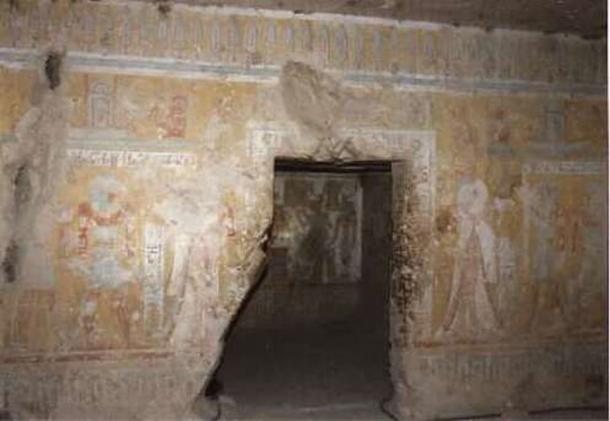
Entrance to the tomb of Tyti. (ArchaeoAdventures)
Several other queens of Egypt were identified in tombs 33, 34, 36, 40, 51 (Iset-Ta-Hemdjert, wife of Ramesses III, mother of Ramesses VI), 60, 68, 71, and 73. However, that doesn't mean that there are no more queens in the Valley. Many tombs still wait for researchers to bring their names back to light.
In the second part, you will read about the tombs of princes and princesses - sons and daughters of the great pharaohs, who were buried in Ta Set Neferu.
---------------------------------------------------------------------------------------------------------
In the first part, a brief history of the research and the story of Ramesside women and their famous tombs were described. In the second part, the adventurous travel through the Valley of the Queens, where the main topic will now be connected with the tombs of princes and princesses.
The royal children were buried in the necropolis since the early 18th Dynasty (circa 1550 – 1295) of the New Kingdom Period. Most of their tombs in the Valley are dedicated to royal children who were never able to become rulers.
Sons and Gods
In the early 1900s, Ernesto Schiaparelli explored a group of five tombs of Ramesses III’s (who ruled c. 1184 – 1153 BC) sons. The most beautiful ones belong to Amun-hir-khopshef (QV55) and Khaemweset (QV44). They both were commissioned at the end of their father’s reign.
Tomb QV55 is very well preserved. The prince died as a teenager. Inscriptions show him with his father, who is depicted introducing him to the gods. The boy is wearing a typical ancient Egyptian kilt and sandals. A five-month old fetus was discovered in the tomb as well, which is believed to have been miscarried by the prince’s mother.
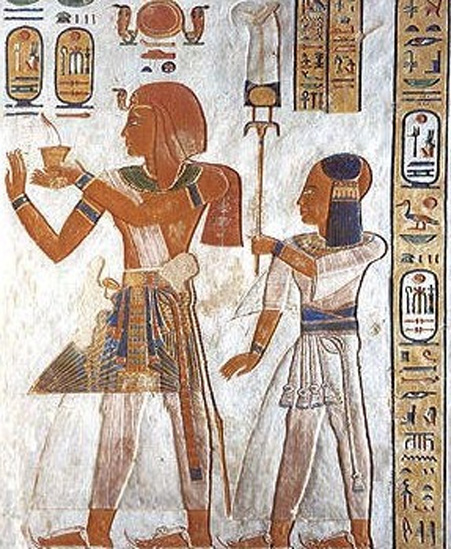
Rammesse III and Khaemwaset. (Public Domain)
Khaemwaset also died young but there is very little information about his age and the cause of his death. His tomb is also very well preserved, suggesting that the artists during those times were very skilled. Similar to the tomb of his brother, the wall decorations follow scenes from the Book of the Dead. The tomb was full of artifacts, broken statues, and coffins. It was looted, but many precious items survived. Schiaparelli discovered the prince’s mummy, which is now on display in Turin, Italy.
Another tomb, QV42, belongs to Pareherwenemef, who was also Ramesses III’s son. He died as a child. His tomb is damaged, but the beauty of the reliefs is still visible. QV53 is the tomb of Ramesses Meryamun, another son of the same pharaoh. Human remains from a later than the Ramesside Period were discovered in the tomb.
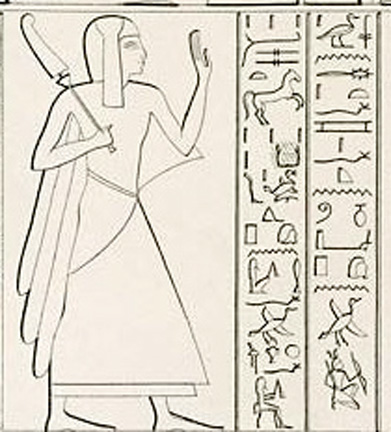
Parehirwenemef in a procession of sons in Luxor. (Public Domain)
The tomb of the fifth son continues to be a mystery. He was born as Seth-her-khopsef, but is known as a Ramesses VIII, the pharaoh of Egypt. His tomb, QV43, was an unexpected find. He ruled between 1130 and 1129 and he was probably murdered. Like all of the tombs of Ramesses III's sons, it was beautifully decorated with a painted and carved relief. The complex of tombs of Ramesses’ sons tells a story about his reign and the tragedies in his family.
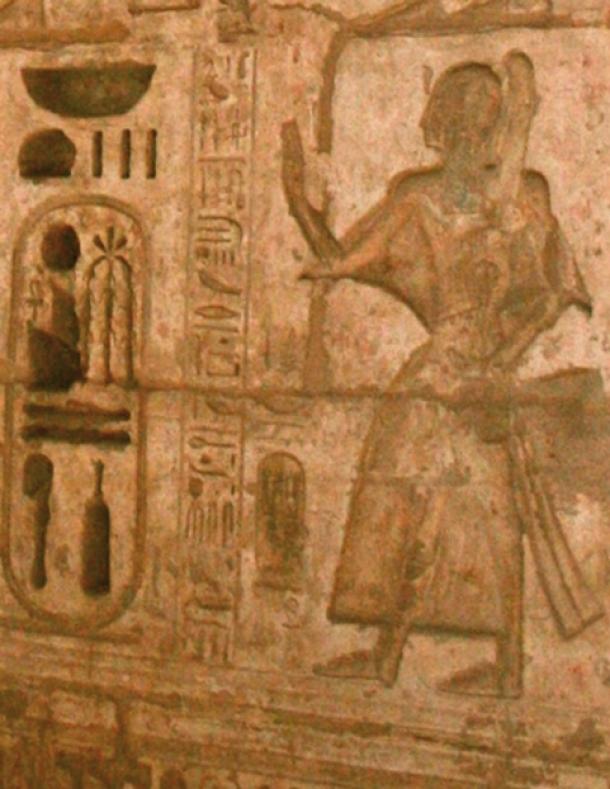
Ramesses VIII was the last of Ramesses III's sons to ascend to the throne of Egypt during the New Kingdom. (CC BY-SA 3.0)
The Daughters of the Sun and Moon
The Valley of the Queens also has a story connected with the only known daughter of the pharaoh of the Second Intermediate Period, Sequenenre Tao. Her name was Ahmose, meaning ''Child of the Moon''. She died during the reign of Thutmose I, but she is known as a princess of the 17th dynasty. Her tomb was discovered by Schiaparelli who took her mummy to Italy. Apart from the human remains, leather sandals and a long piece of linen inscribed with 20 chapters of the Book of the Dead were found in the tomb.
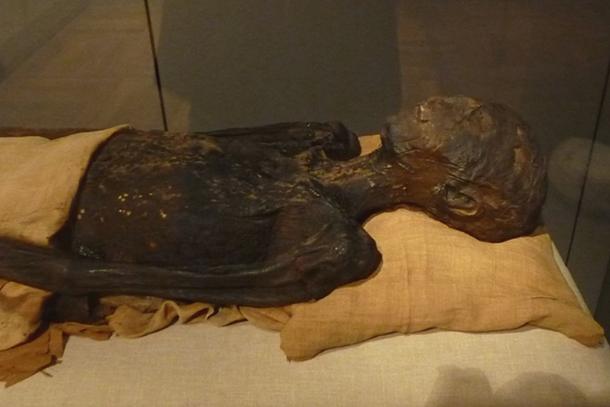
Princess Ahmose's mummy. Turin, Museo Egizio. (CC BY-SA 4.0)
Another interesting tomb belongs to Princess Tanedjemet, who was a daughter of Ramesses I, and wife of Ramesses II or Sety I. Her tomb, QV33, was explored by Lepsius. The reliefs in the tomb show her as a Mistress of the Two Lands. Most of the decorations didn't survive the years and all of the tomb is in a very bad condition. It was looted for the first time at the end of the reign of the 20th dynasty, and reused during the Third Intermediate Period by an unknown person. During the Roman period, the tomb became a burial location for many people.
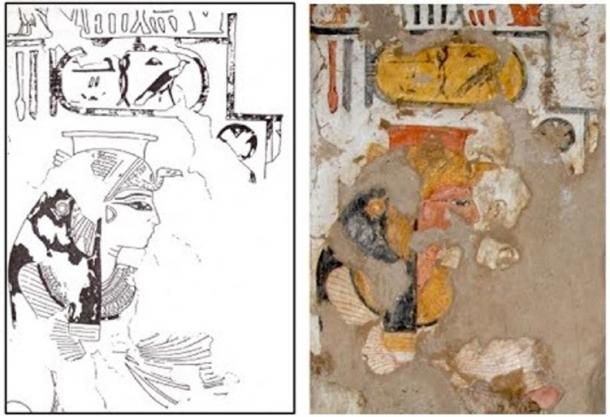
Princess Tanedjemy from QV 33. (Google Sites)
Good Vizier of his King
The Valley of the Queens is also the location of Imhotep’s burial. He was a vizier of Thutmose I. He was also the tutor of the king’s sons. Due to his strong position and appreciation by the pharaoh, he received a special place with the royals – he was buried in the sacred Valley of the Queens. His tomb was discovered between 1903 and 1905 by Schaparelli's expedition. The tomb is a small, simple shaft with one only chamber. The tomb wasn't damaged as much as many others in the necropolis. The chamber contained his mummy and some funerary goods including canopic jars, alabaster plaques, mummified ducks, baskets, and wooden boxes.
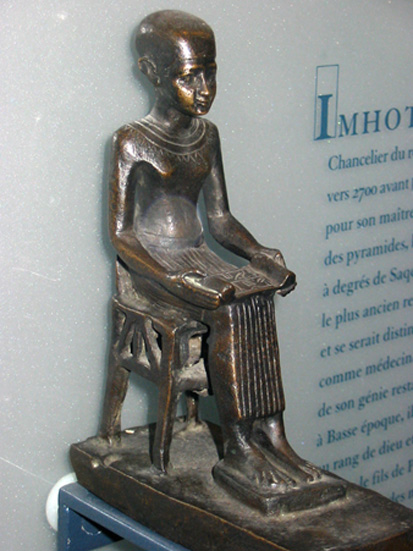
Statuette of Imhotep in the Louvre. (CC BY-SA 3.0)
The burial of a non-royal in such a place isn't something unique, but it is rather rare. One of the explanations for this situation is that he could have also been a relative of the pharaoh's family. Nonetheless, the lack of inscriptions and other information means that his origins are unknown.
A Valley of Secrets
Most of the tombs in the Valley of the Queens were looted and damaged in ancient times. In the early Christian years, they became a place for meetings. The Coptic occupation took place until the 7th century AD.
It is obvious that not all of the tombs have been found. Researchers believe that it is very possible that more new discoveries will appear in the Valley of the Queens than in the Valley of the Kings. For example, one of the tombs which remains undiscovered is the one which belongs to Isetnofret, a secondary wife of Ramesses II.
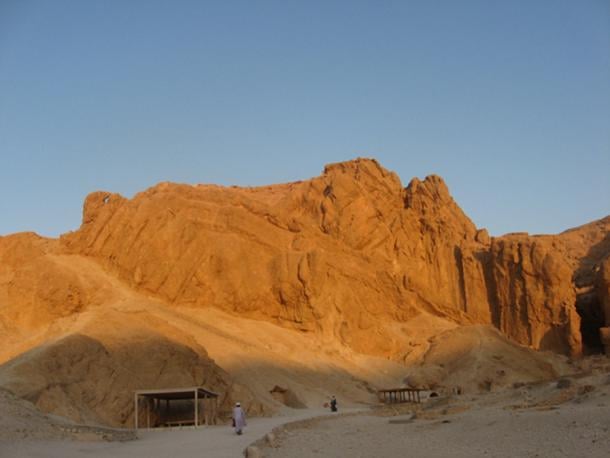
Valley of the Queens near Luxor, Egypt. (Public Domain)
Nowadays, most of the tombs in the Valley of the Queens are not open for tourists. Egyptologists, with the cooperation of the Ministry of Culture, the Egyptian Antiquities Organization, and other organizations interested in the Valley, are trying to restore and protect what has survived until now. The work is very expensive, and researchers are fighting against time and nature, which turns the tombs into sand.
Featured image: Valley of the Queens near Luxor, Egypt. Source: (CC BY 3.0)
References:
Christian Leblanc, Ta Set Neferou, 1989.
Aidan Dodson, Dyan Hilton, The Complete Royal Families of Ancient Egypt, 2004.
Lorna Oakes, The Illustrated Encyclopedia of the Pyramids, Temples & Tombs of the Ancient Egypt, 2006.
http://www.lonelyplanet.com/egypt/nile-valley/luxor/sights/cemeteri...
Tags:
Replies to This Discussion
Have questions?
Need help? Visit our Support Group for help from our friendly Admins and members!
Have you?
Donations & Sponsorship
Connect
Visit The Temple
on Facebook:
Blog Posts
The Devil's Prophet
Posted by the Draç (李) on June 7, 2025 at 11:00am 0 Comments 0 Likes
The Archdevil(s)
Posted by the Draç (李) on June 5, 2025 at 10:30am 0 Comments 0 Likes
STONE OF YELLOW!
Posted by Rosey Cross on June 2, 2025 at 6:30pm 1 Comment 4 Likes
The Archdevil
Posted by the Draç (李) on June 1, 2025 at 7:30am 0 Comments 0 Likes
The Roc Nation Bloodline
Posted by the Draç (李) on May 28, 2025 at 2:35pm 0 Comments 0 Likes
The Illuminati Li's
Posted by the Draç (李) on May 28, 2025 at 2:34pm 0 Comments 0 Likes
Dead Presidents
Posted by the Draç (李) on May 27, 2025 at 4:35pm 0 Comments 0 Likes
The Black Rite
Posted by the Draç (李) on May 27, 2025 at 7:30am 0 Comments 0 Likes
Channeled Angelic Wisdom of the Jewels of Truth Series on Strength, Self-Realization, & Love Hurts
Posted by Atrayo on April 30, 2025 at 2:13pm 0 Comments 1 Like
Channeled Angelic Wisdom of the Jewels of Truth Series on Heaven, Worship & Celebration of God, Thirst, and Heavenly Monarchs
Posted by Atrayo on April 14, 2025 at 2:13am 0 Comments 2 Likes
DO YOU REMEMBER?
Posted by Rosey Cross on March 13, 2025 at 5:28pm 0 Comments 1 Like
WHAT HAS HAPPENED TO US?
Posted by Rosey Cross on March 1, 2025 at 6:36pm 0 Comments 2 Likes
INTERTANTRIC!
Posted by Rosey Cross on February 26, 2025 at 6:18pm 0 Comments 0 Likes
Blessed Imbolc
Posted by Zhan on January 30, 2025 at 9:44pm 0 Comments 2 Likes
Channeled Angelic Wisdom of the Jewels of Truth Series on Free Will and Sublime Gratitude
Posted by Atrayo on January 28, 2025 at 4:19pm 0 Comments 1 Like
CHAOTIC PEACE?
Posted by Rosey Cross on January 26, 2025 at 5:58pm 0 Comments 1 Like
HEART CHAKRA GREEN!
Posted by Rosey Cross on January 26, 2025 at 5:51pm 0 Comments 1 Like
Channeled Angelic Wisdom of the Jewels of Truth Series on Omni-Lives and The God Spark Within
Posted by Atrayo on January 25, 2025 at 3:05pm 0 Comments 1 Like
OUR TIME!!!
Posted by Rosey Cross on January 15, 2025 at 5:29pm 0 Comments 1 Like
NOVEMBER AWARENESS
Videos
© 2025 Created by Bryan
Powered by
![]()